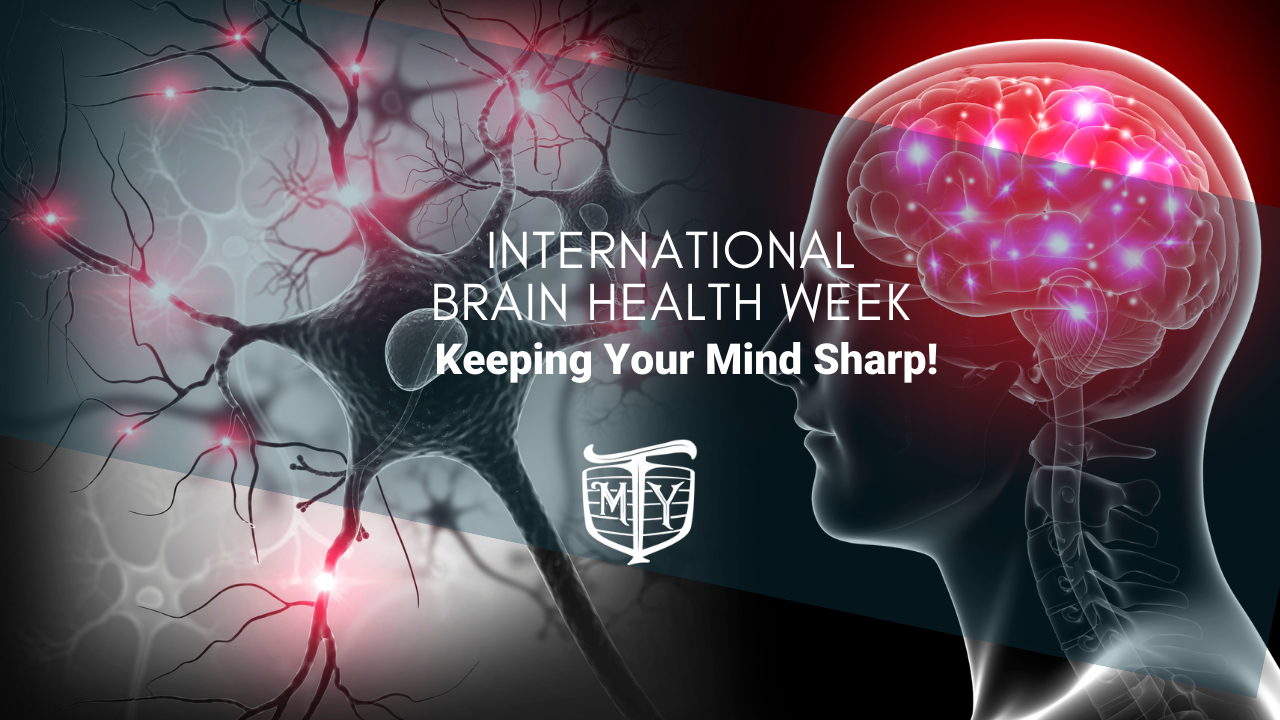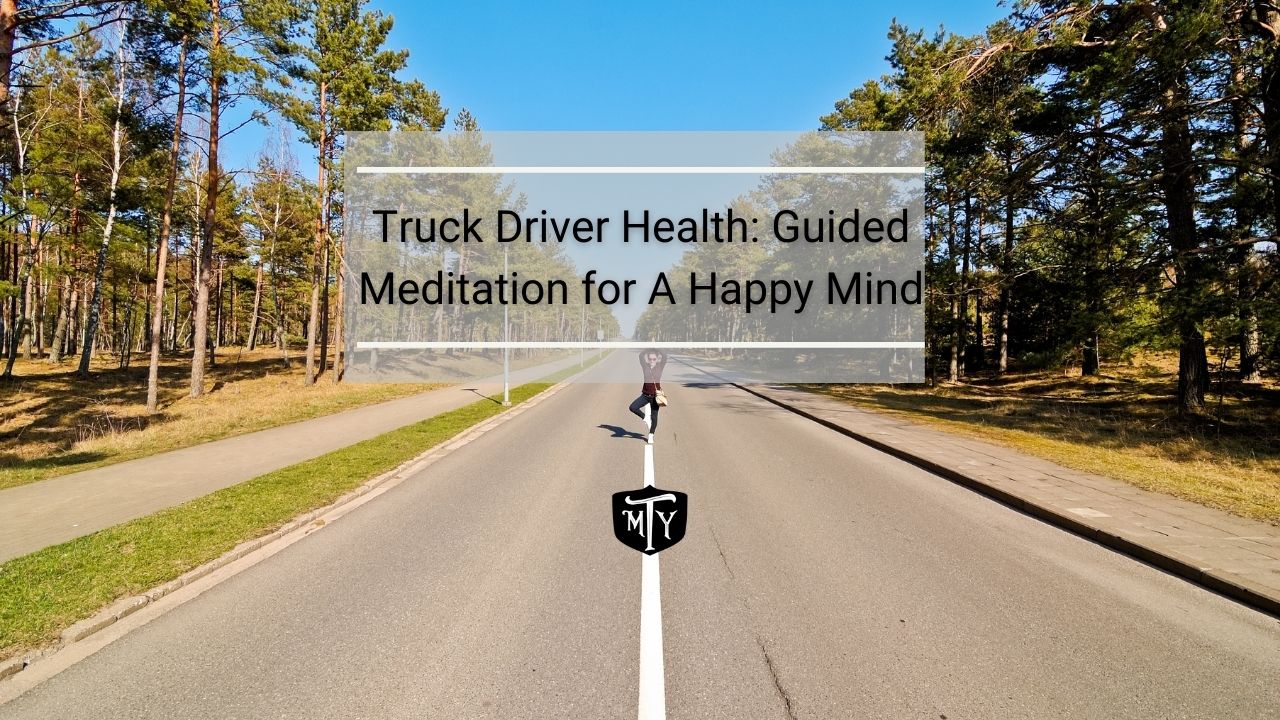
It’s International Brain Health Awareness Week (March 14-20, 2022).
Let’s celebrate by taking care of our brain health!
“Even before you leave the womb, your brain works throughout your life to control your body’s functions and helps you understand and interact with the world around you”. When you focus on maintenance for your brain you will then help your mind stay focused, clear, and alert when you need it to and train your brain to respect downtime play, and rest when needed!
As truckers you know the importance of heart health, but what about brain health?
Brain health is all about maintaining and reducing risk factors and respecting the machine within. As we get older our brains when not taken care of properly can begin to show their wear a which can affect your health, happiness, and overall functionality.
How do you keep your brain sharp?
What do you do to maintain and sharpen your brain and mind? Many take this for granted earlier in life but just as important as it is to learn new things, so is it important to give your brain a break, and learn to rest your brain.
Does your brain need sharpening?
Does your brain need resting?
Does your brain need maintenance?
Amazing Study
2.4 million people downloaded an app and played a game called the Sea Hero Quest that involved memory from age 19-75 years old; it was the only study of its kind. After these participants played the game, the research was astounding.
“One key early finding, presented at a meeting of neuroscientists in the US, was that navigational ability begins to decline much earlier than was previously thought – possibly from as young as 19. The study found that 19-year-old game players had a 74% chance of accurately hitting a maritime target. By the age of 75, this figure had fallen to 46%.”
And already, at age 20, our strategic memory recall is beginning to decline, and we may not even know it.
The data published in Proceedings of the National Academy of Sciences notes that our peak mental performance is typically at age 35 and then declines by 10% ten years after that.
We need to sharpen our brains regularly. It’s backward thinking in our culture today rather than thinking of brain health as “preventative care,” thinking of it as sharpening and maintenance.

What Causes Our Brain to Age?
Researchers have discovered several factors that speed up brain aging. Things like obesity, especially in midlife, can accelerate brain aging by ten years! And add in our populations’ high intake of sugar, diet sodas all contribute to poor brain health. But that’s not the only thing that can affect brain health as we age. Living a sedentary lifestyle, eating a highly processed diet, not socializing, irregular poor sleep, and not practicing self-care, stress-relieving activities can affect how our brain ages.
5 Practices to Sharpen Brain Health:
1. Get out and move
Where can you fit in just 5 or 10 minutes of movement into your day? Don’t overcomplicate it; just move, dance, walk, squat, anything, just move! You don’t realize it, but your brain is tracking with you every step of the way, and that extra boost of oxygen and serotonin, dopamine, and neurotransmitters going straight to your brain doesn’t hurt either.
2. Socialize
When is the last time you talked with that one friend, your mom, your brother, or rolled down the window and said “hey”? Isolation leads to a decline in our cognitive abilities. Socializing can help improve and impact thinking, memory, and behavior. Just like a young child needs others around him/her to mimic and encourage the developmental process, so does our aging population and those in-between.
3. Eat real food
When we have a disease, what we have is a deficiency. What do you lack that has caused our body to malfunction. Our bodies are like trucks; we require certain maintenance to our parts, specific fluids, lubricants, and fuel to run optimally. You would never consider skimping on what you fuel your truck with because you know the consequences. If you are living in dis-ese or stress what are you lacking, and how can you refill it? The best and fastest way is to eat living food because you are alive.
4. Get better quality sleep.
It’s not that you necessarily need more sleep but rather better quality of sleep. What do you need to do to improve the quality of your sleep? Better mattress? Darker room? Headphones with relaxing music? Essential oils? When it comes to sleep, focus on quality instead of quantity.
5. Engage in de-stressing activities
Stress has become a badge of honor like the girl scouts or boy scouts badges when they sell cookies and build a soapbox car. My advice, slow down to speed up. More is not better, and the more stressed your system is, the less effective you will be, and you will begin to see your body, mind, and actions slow. Consider a walk without your phone, deep breathing, relaxing music, meditation, yoga, a shower, or going to bed early. These may seem small and insignificant, but they can make a huge difference. When you take time for yourself, you make time for the essential things in life. This is why Mother Trucker Yoga focuses on small simple changes and moves that you can do in 5 minutes or less and even things you can do safely while driving. [Try us out for FREE use the code: MTY30 for a FREE 30 days!]
6. Choose intellectually stimulating activities
Do hard things. I’m not talking about an Iron Man, but rather things that challenge you. This is where technology can help! Memory game apps, puzzles (electronic or physical), even crosswords, word searches, board games, and cards are all good ways to keep your mind sharp. If you have kids, don’t just let them plop down on the couch and watch T.V. have family game night. If you are on the road, pull out that pen and do a crossword puzzle. These are time-tested practices that will keep your mind at its best.

Don’t wait. We live in a world that is trained to respond to our health in the form of sick care. But the way to address our aging brain is to practice preventative care and create consistency in our health and health practices.
Don’t wait until you see a decline to make a change in your brain health.
Don’t wait until you feel less sharp to seek help.
Don’t wait until you need extra care to decide to care.
Don’t wait.
References: https://www.mirror.co.uk/science/scientists-reveal-age-your-brain-9274294 https://www.theladders.com/career-advice/this-is-the-exact-age-when-your-brain-function-starts-to-decline https://www.medicalnewstoday.com/articles/319185#Therapies-to-help-slow-brain-aging











